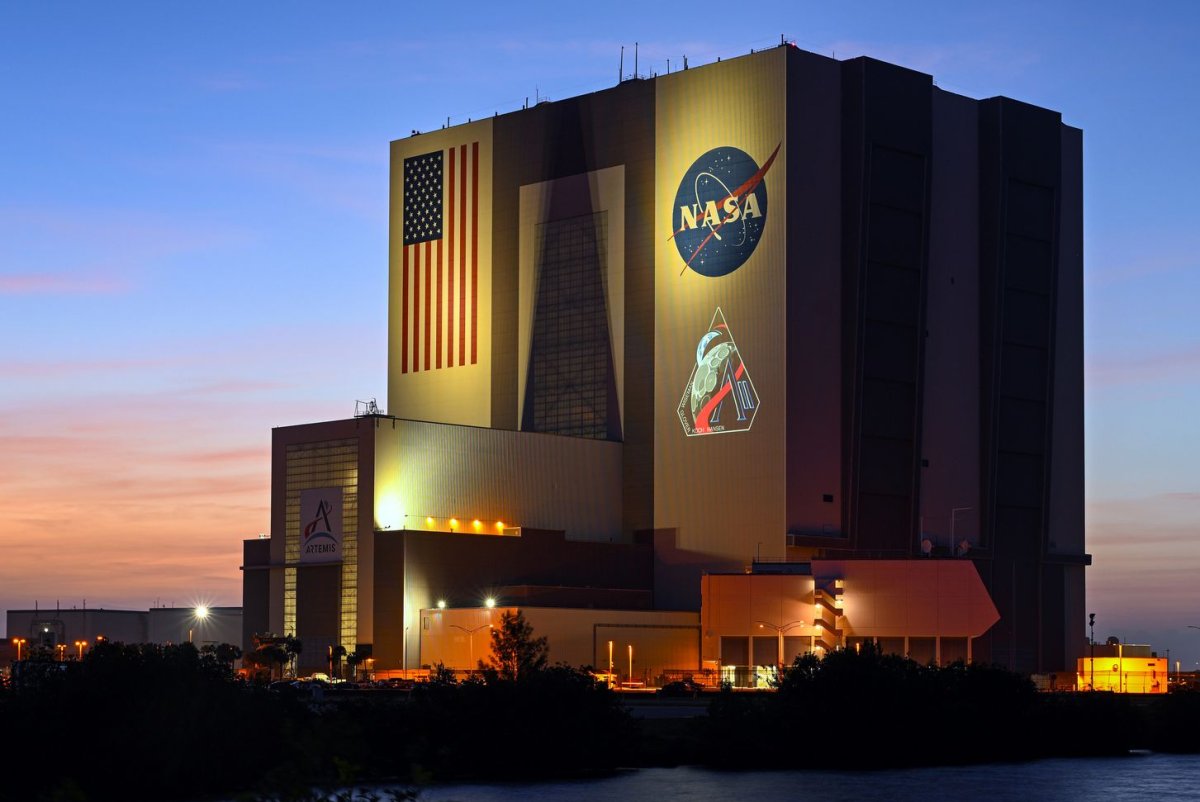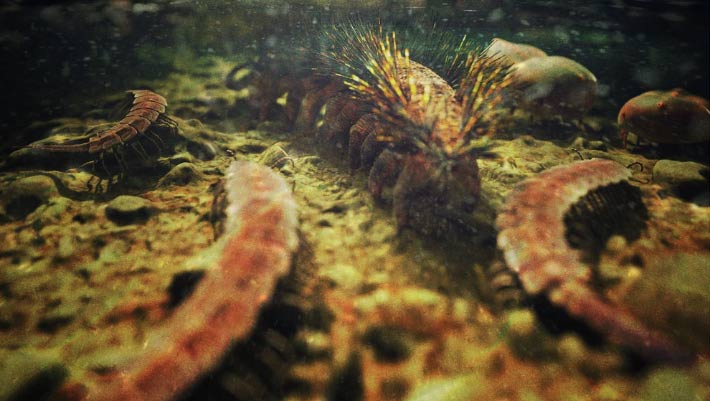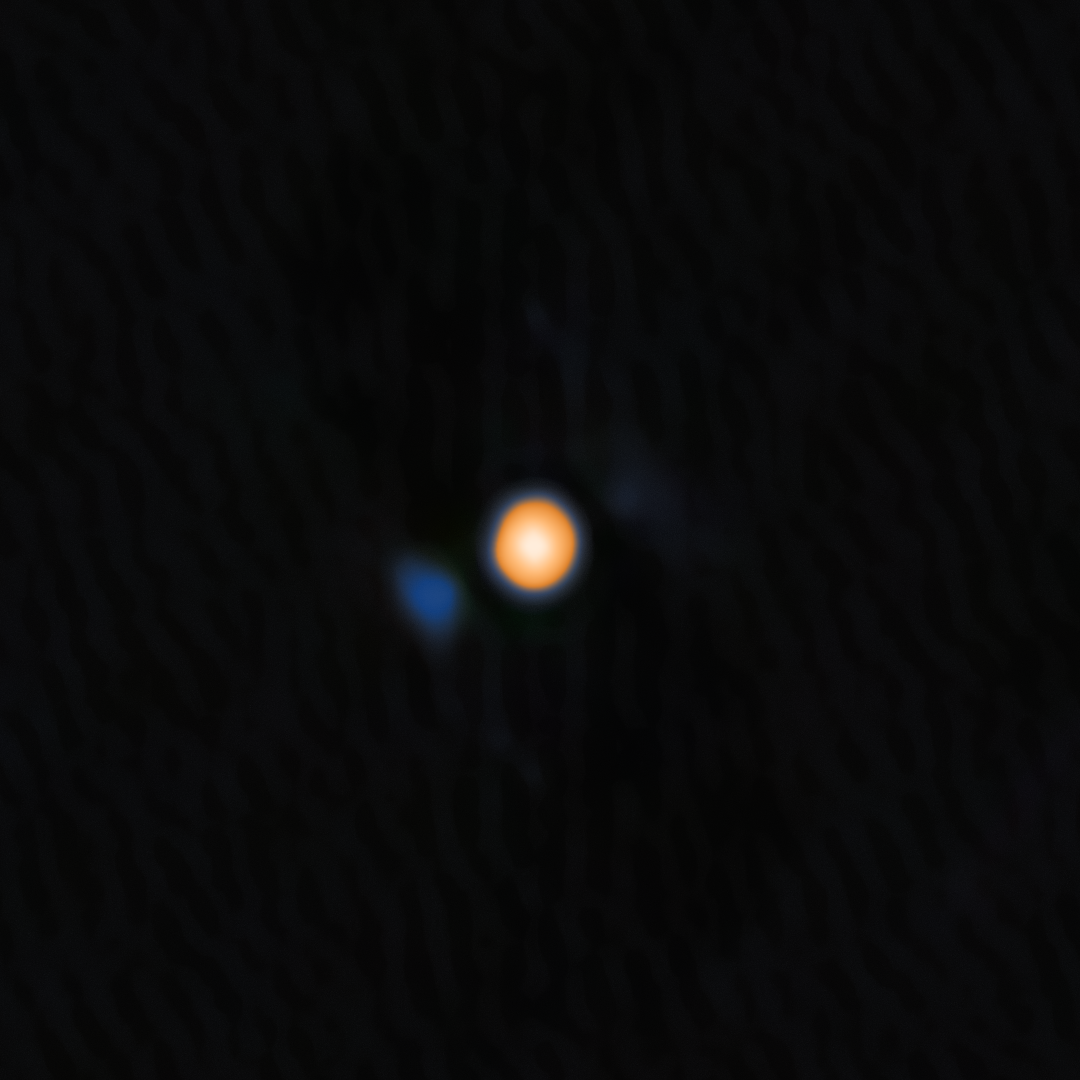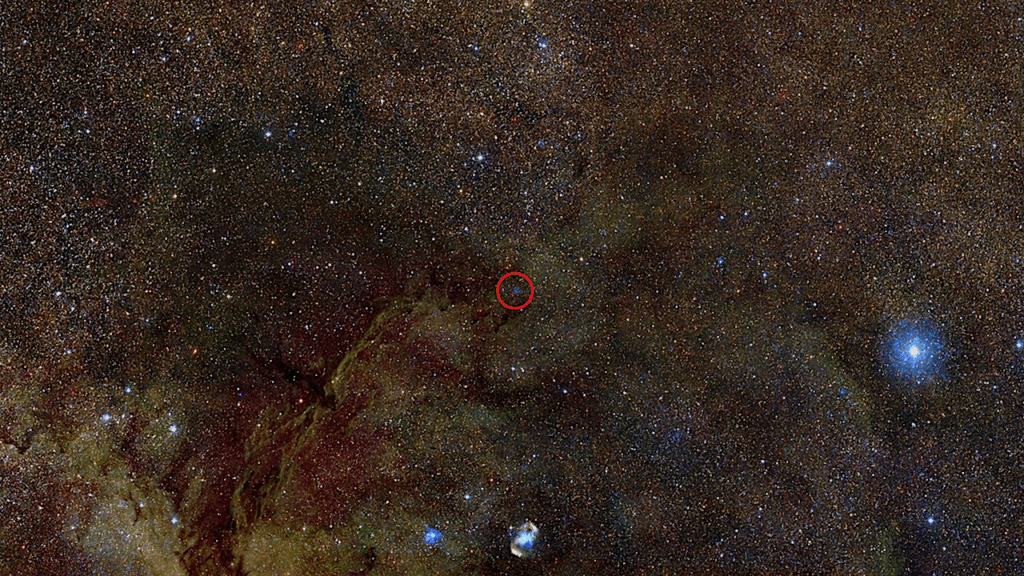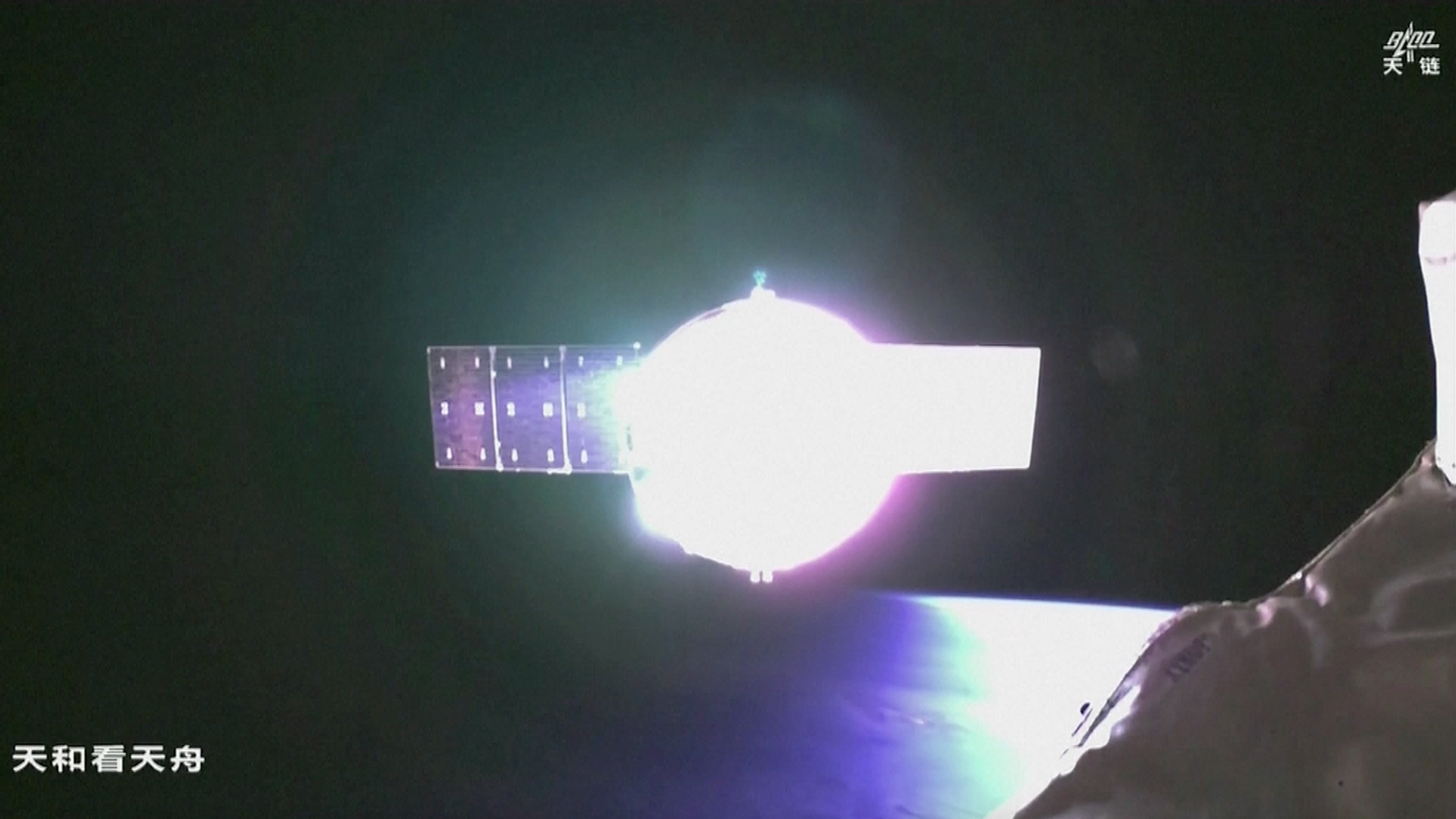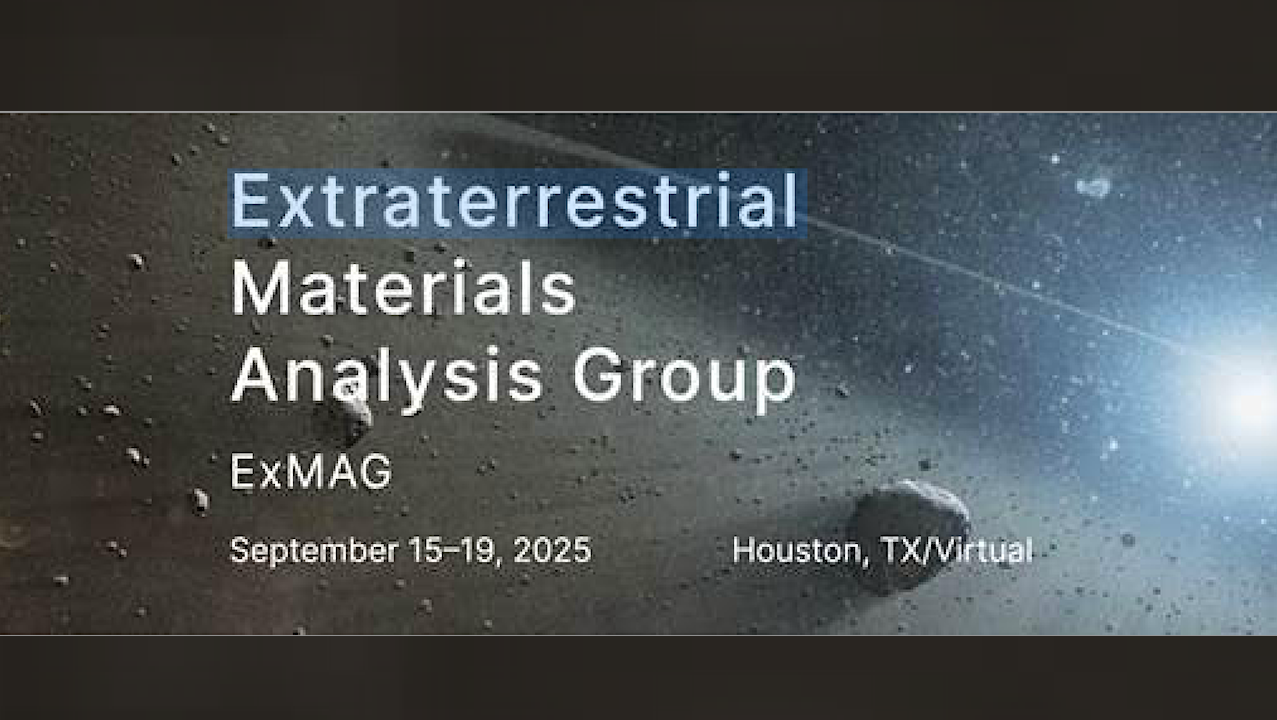First published in 1865 as a caterpillar, nearly fifty years before the discovery of Canada’s Burgess Shale, Palaeocampa anthrax shuffled between classifications — worm, millipede, and marine polychaete — until 130 years later, when University of Michigan paleontologist Richard Knecht and his colleagues realized its true identity: Palaeocampa anthrax most likely inhabited a freshwater environment, contesting the view that Paleozoic lobopodians were exclusively marine.
Environmental reconstruction of the Montceau-les-Mines Lagerstätte with Palaeocampa anthrax: a large Palaeocampa anthrax is depicted at the edge of a shallow inland streambed, shadowed by the lush vegetation and mist of a coal forest, flanked by several euthycarcinoids, Sottyxerxes multiplex, and a pair of freshwater xiphosurans, Alanops magnificus; the nearest ocean environment is several hundred km southwest. Image credit: Knecht et al., doi: 10.1038/s42003-025-08483-0.
Lobopodians are extinct, soft-bodied creatures that bridge the evolutionary gap between a primitive worm-like ancestor and modern arthropods like insects and crustaceans.
Known mostly from Cambrian marine deposits such as the Burgess Shale, they include iconic fossils like Hallucigenia and Aysheaia pedunculata discovered in 1911, and were thought to be exclusively marine — until now.
“Lobopodians were likely a common sight on Paleozoic sea beds, but apart from microscopic tardigrades and terrestrial velvet worms, we thought they were confined to the ocean,” Dr. Knecht said.
In new research, Dr. Knecht and co-authors analyzed 43 specimens of Palaeocampa anthrax from two Carboniferous Lagerstätten — Mazon Creek in the United States and Montceau-les-Mines in France — using advanced imaging, including backscatter scanning electron microscopy (SEM) and energy-dispersive spectroscopy.
They revealed exquisite anatomical features — most notably, nearly 1,000 bristle-like spines covering the body.
Using Fourier-transform infrared spectroscopy (FTIR), they also detectedchemical residues at the spine tips — suggesting the spines secreted toxins to deter predators in its swampy habitat.
“What amazed me is that fragments of biomacromolecules could be exceptionally preserved or altered to geomacromolecules in fossils,” said Columbia University paleontologist Nanfang Yu.
“I’m thrilled this technique possessed the sensitivity and specificity to differentiate fossilized remains from the rocky substrate.”
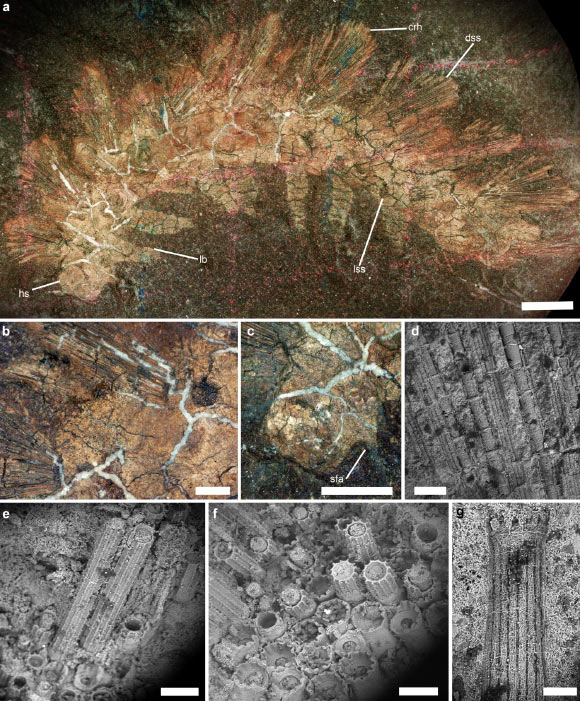
Palaeocampa anthrax from Mazon Creek Lagerstätte. Image credit: Knecht et al., doi: 10.1038/s42003-025-08483-0.
According to the team, Palaeocampa anthrax’s closest relative is Hadranax, a Cambrian lobopodian from Greenland, nearly 200 million years older.
Both had ten pairs of legs, no claws and were blind; but while Hadranax was unarmored and navigated the deep sea using elongated frontal appendages, Palaeocampa anthrax, at just 4 cm long, bore a dense coat of spines — arranged above each pair of legs, giving it a fuzzy caterpillar-like appearance — and inhabited freshwater, possibly amphibious, environments.
The discovery also resolves the mystery of France’s Montceau-les-Mines fossil site, once considered as marine.
“Mazon Creek is a mix of terrestrial, freshwater, and marine animals,” Dr. Knecht explained.
“But, Montceau-les-Mines, where half of the specimens come from, was hundreds of km inland, with no ocean present.”
“Its reclassification confirms the site’s nonmarine setting, offering a rare glimpse into ancient freshwater ecosystems.”
This discovery broadens our understanding of lobopodian diversity and raises new evolutionary questions: How many others made the leap from marine to freshwater and could more be hiding, misidentified, in museum drawers?
“The conditions required to fossilize soft-bodied creatures like lobopodians are rare,” Dr. Knecht noted.
“Most of our insights come from Cambrian Lagerstätten, but the Carboniferous period — when Palaeocampa anthrax lived — offers far fewer such windows, making every new find incredibly valuable.”
The results appear in the journal Communications Biology.
_____
R.J. Knecht et al. 2025. Palaeocampa anthrax, an armored freshwater lobopodian with chemical defenses from the Carboniferous. Commun Biol 8, 1080; doi: 10.1038/s42003-025-08483-0
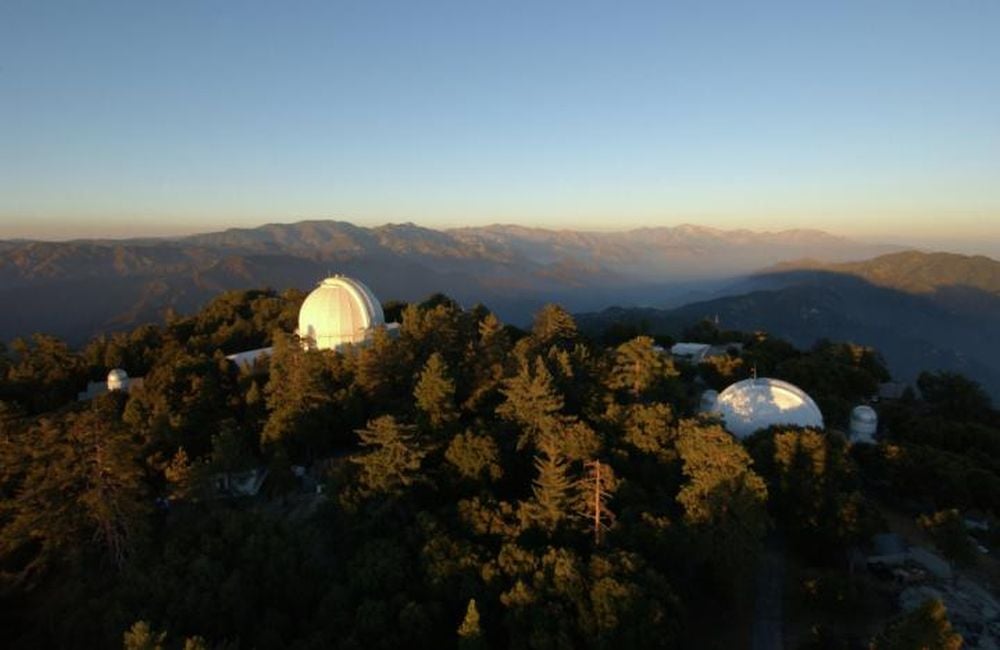
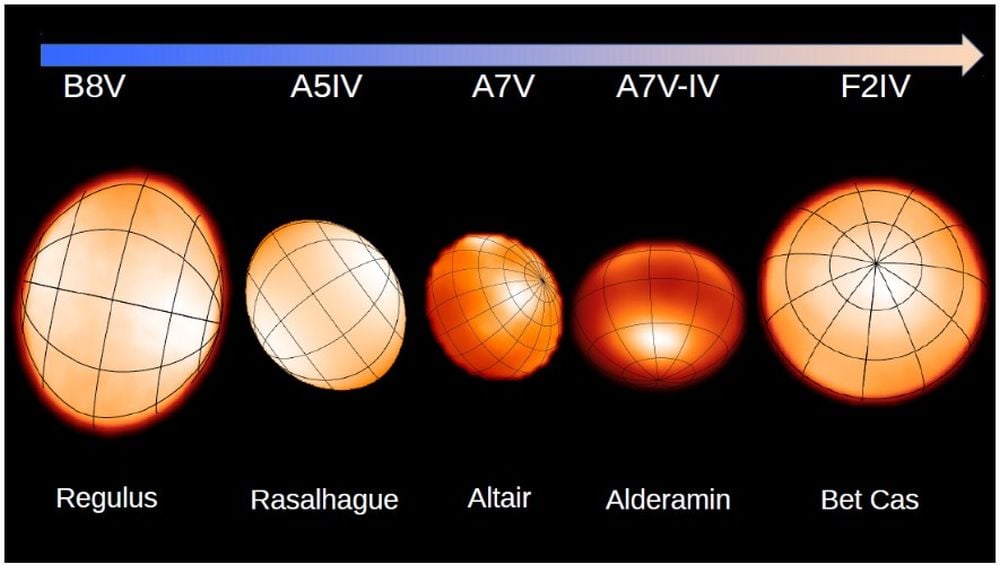 These are some of the rapidly-rotating stars studied by CHARA. The rapid rotation deforms the stars into oblate shapes. That means the equators are further from the cores, and are cooler as a result. This is called gravity darkening, since the equators have less gravity than the poles. Image Credit: CHARA Array/John Monnier
These are some of the rapidly-rotating stars studied by CHARA. The rapid rotation deforms the stars into oblate shapes. That means the equators are further from the cores, and are cooler as a result. This is called gravity darkening, since the equators have less gravity than the poles. Image Credit: CHARA Array/John Monnier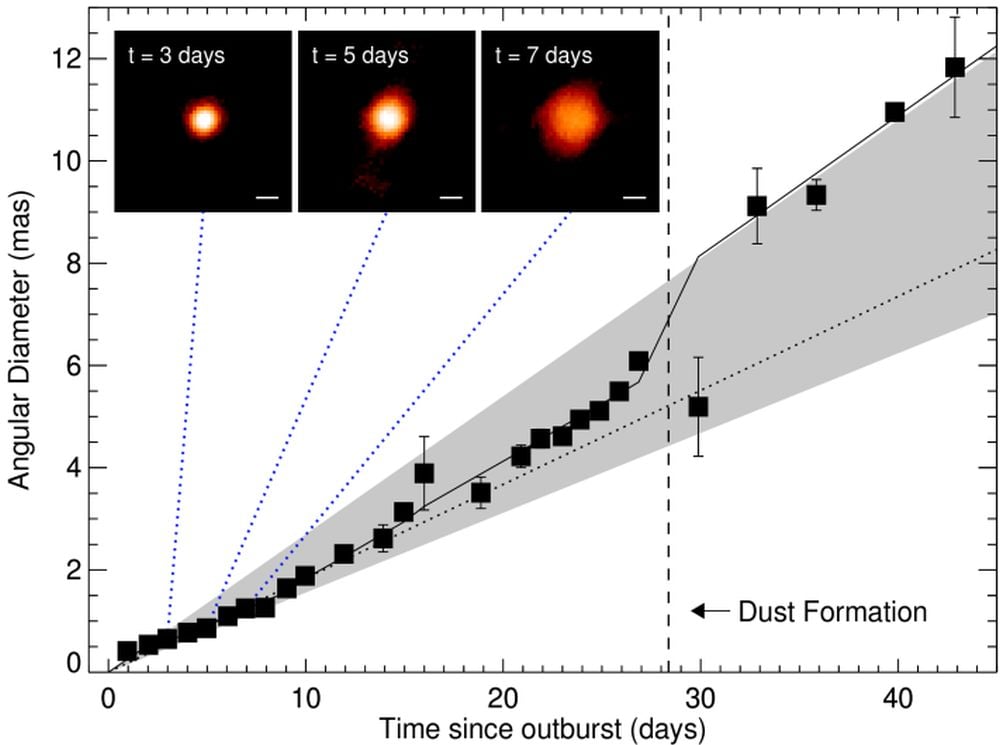 This research figure shows how the CHARA array was able to measure the expansion of a Nova fireball from Nova Delphinus 2013 (V339 Del). CHARA was able to show that there’s more complexity in these events than thought. By measuring the expansion rate accurately, CHARA showed that a bipolar structure forms as early as the second day and indicates that the fireball is clumpy. Image Credit: Schaefer et al. 2014, Nature, 515, 243
This research figure shows how the CHARA array was able to measure the expansion of a Nova fireball from Nova Delphinus 2013 (V339 Del). CHARA was able to show that there’s more complexity in these events than thought. By measuring the expansion rate accurately, CHARA showed that a bipolar structure forms as early as the second day and indicates that the fireball is clumpy. Image Credit: Schaefer et al. 2014, Nature, 515, 243